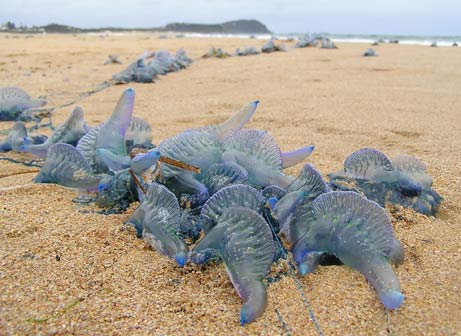Portuguese Man-of-War are part of the Cnidarians phylum. This division of marine organisms are distinguished by specialized cells called, cnidocytes that are used to capture their prey. Their body structure is made up of a jelly substance called mesoglea. Cnidarians have two body forms, Medussae and polyps. Both are radial symmetrical with tentacles, a single cavity used for digestion, and one output and input for consumption and exertion.

Portuguese Man-Of-War (Pa`imalau/ Siphonophora Hydrozoa) are found in subtropical areas with warm waters, such as the Indian and Pacific ocean. Unlike most cnidarians, Portuguese Man-of-War have a bilateral symmetry. This unique characteristic is due to its pneumatophore, which acts as a sail as it floats along the surface of the water. This sail is can be 9-30 centimeters and is filled with gases equal to the atmosphere, so that it stays afloat. From this long tentacles hang, which provides the perfect trap for little fishes and shrimp. The sting kills the prey and then the tentacle muscles contract to bring the food to its digestive polyps. However, some fish have a symbiotic (beneficial to attached organism) relationship with the Portuguese Man-of-War.
Portuguese Man-of-War reproduce by sexual and asexual reproduction. The gonzoer contains sacs that are either ovaries or testes. When the Portuguese Man-of-War fertilize these sacs are released and the spawning cycle is triggered.